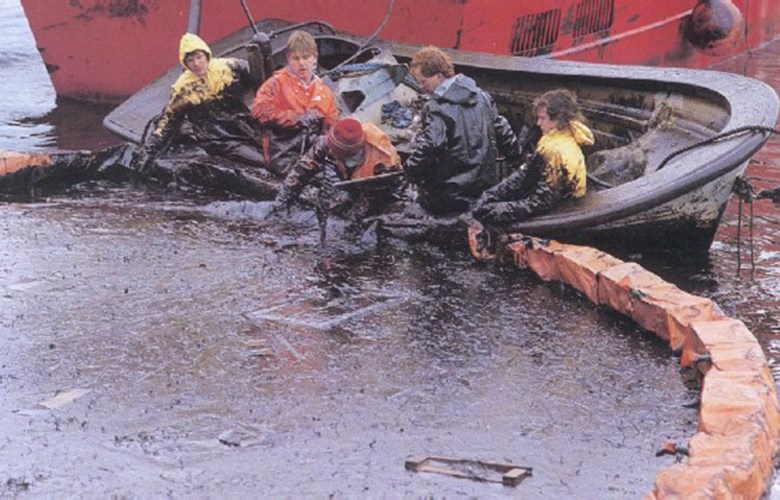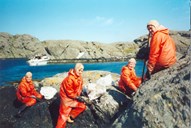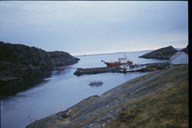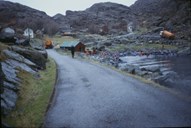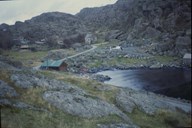Without forward thrust in storm
The 'Mercantil Marcia' was en route from Årdalstangen to Sunndalsøra carrying 14,675 tons of aluminium. On the Saturday, there was a strong wind from the south-west up to 25 metres per second. At 11 a.m., the ship took a pilot onboard from Fedje, then the engine broke down.
Onboard were 340 tonnes of heavy oil, 54 tonnes of diesel, and seven tonnes of lubricating oil. The state pilot Dagfinn Solheim asked for a tug, but the 'Tenax' leaving from Mongstad was unable to get there before the disabled ship was grounded near Svalene. The pilot estimated the wind at storm strength with powerful rain showers and lightning, the height of the waves was around six metres. The ship hit the sea floor mid-ship, on the starboard side.
Unusually treacherous and weather-exposed waters
Svalene is a wide collection of skerries and sunken rocks emerging from the sea in the westernmost part of Sognesjøen. The ship was grounded at 12:50 p.m., some eight kilometres south-west of Kvereknappen lighthouse. The vessel was stranded at the three-metre-deep sea floor south of Håskjerbåen near Storsvalene. Because of heavy sea, the tug was unable to come to the rescue, and the crew were taken ashore by helicopter in two flights. The last ones abandoned ship at 2:50 p.m.. Ten minutes earlier the ship had broken in two. It was watched from sea and air. On Sunday morning, an oil slick drifting westwards was observed. The stem of the ship was moving away from the stern, which was heeling.
Heavy seas pull the ship down
In the days that followed, it became clear that a major oil spill disaster was looming. During the night to Monday, heavy sea had broken and emptied one of the bunker tanks. The weather was still so foul that it was impossible to get onboard the wreck. On the Tuesday, the waves measured 4-5 metres in height, yet some rescuers had managed to get onto the stem of the ship and reported that there was a chance that the cargo in one of the holds could be salvaged. The following day the stern had turned 180 degrees around the anchor chain, and both ship halves were being pulled down. On the Thursday, only the top of the mast of the stem was visible. The stern was empty of oil and was wrecked completely some time later.
A struggle in deep despair
People considered it pointless to put containment booms round the wreck. Slicks and huge quantities of heavy and lighter oil were approaching land. The area around Trovågen and Kverhella was in the highest danger. Women and men were standing on the beaches in deep despair and fought in vain with forks and shovels. From Husøy and eastwards to Kråkenes the beaches were more or less polluted. A fleet of vessels gradually started to work with containment booms and skimmers. Local fishermen, experienced with seines, made important contributions. Protection of the fish farm installations had the highest priority. People and vessels were black, shining and glistening from the oil, which was thick as porridge. People thought the work was badly organized.
No permanent damage registered
On shore a crowd of people were gathering: organizers, engineers, journalists, even members of the municipality committee of the Storting (Parliament). Express boats hurried to and fro, with people and equipment, and lunch bags, they say.
Straits were closed, oil led into coves and removed with septic tank drainers wherever possible. Local and military crews and people from the environment protection organization did the first cleaning job on the beaches, working on until November. More thorough cleaning came later.
The combined efforts collected from sea and land 565 tonnes of oil emulsion (oil mixed with sea water). This corresponds to 45-50 % of the oil cargo of the wreck. No permanent damage has been registered after the oil spill in Solund, but still, 10-12 years afterwards, researchers register oil coming up on soft beaches.

